When I first came up with my classification system for cal. 1040 dials, there a few dials seemingly “missing”. Missing in the sense that they didn’t appear to exist, but based on the DNA of Omega’s dial design, they probably should. One that remains undiscovered would be a silver Type A dial with OSA text order rather than OAS. It may be that Omega never made that dial variant, but for all other colors of A, B, and C dials – blue, brown, and gold – there were two text orders.
Early on, Type I was another “incomplete” dial family, and the family that was the toughest to attach to a single reference. The blue, silver and gold dials in this family were relatively common, but all three appeared on multiple references. The Yachting Chronograph 176.010 was the most appropriate reference, but these dials also frequently showed up on reference 176.007 and even 176.005. It seemed strange that there was no brown version, since most of the 1040 Seamaster family followed a pretty simple color convention: steel cases could come with either blue or silver dials, and gold plated cases could come with either gold or brown dials.
The Least Common 1040
The gold plated MD 176.010 proved tricky to determine what dial or dials it was originally paired with. It is easily the least common of the cal. 1040 cases, with somewhere close to 1,000 units made, and possibly less. I’ve probably seen around 10-15 total examples and those included and six different dials! This reference never showed up in period ads so it is impossible to prove one way or another which of those six were correct, so my conclusions are based on what makes sense based on the other watches in the family. The rule of thumb should still be blue and silver were for steel cases and gold and brown dials were for gold plated cases. The problem was that I just had never seen a brown dial in a gold plated 176.010 case, and it didn’t appear that Type I – the one most appropriate for the Yachting Chrono – came in brown.
Type I4
Then in 2016, I spotted a watch for sale with a dial I had not seen before but had wondered why not. The dial was unquestionably legit – it possessed all the features associated with other Type I cal. 1040 dials in a gorgeous fume brown dial. There were two catches: the case was grotesquely overpolished, and the price was ridiculously high.
Above photos from aicherwatches.com.
Some Notes On Polishing
Polishing is the enemy of vintage watch collectors. This can be a surprise to non-collectors or people that are into newer watches, since most jewelry stores that carry modern watches will offer to polish your watch or wedding ring as soon as you walk in the door as a free service.
Polishing actually removes trace amounts of metal. Superficial scratches to a brushed finish can be removed with the finish mostly restored using a ScotchBrite pad. Minor scratches to mirror-finish surfaces can be repaired with Cape Cod. But the big stuff: dents, gouges, or even unwanted engravings typically are removed with a polishing wheel. The trade-off is a loss of the fine original finish, transitions from top to side or from brushed to smooth surfaces, and sharp edges. The end product is “shiny”, which tends to trick novice eBay buyers into believing they bought a well-preserved watch when in reality it has lost its original character and most of its value to collectors.
This example was damn near ruined by polishing. Of all the 1040 watches, the 176.010 has the most complex series of brushed and mirrored surfaces and facets, but all you could see were blunt, shiny, rounded lugs. A total shame. If it weren’t for that beautiful dial, I would have just moved on…
I Must Have It
Still that unicorn of a dial existing and someone else possible owning it nagged at me. I decided that I needed to at least try to acquire this watch and begin a restoration project. I reached out to the seller and engaged in a long, drawn out negotiation. I didn’t like his price and pointed out that his case was worse than any I’d ever seen. He resisted, but the lack of interest from anyone else as the weeks dragged on gave me leverage. We finally agreed to a fair price, and the watch was mine. When it arrived, the chronograph wasn’t working properly so the seller kindly gave me a partial refund to put toward repairs.
The Restoration
Could the case be salvaged? Case restoration was Plan A. I checked with a few well known experts at case restoration, and they turned me down based on my photos. The verdict was exactly as I feared: the case was too far gone. So Plan B was sending it to Omega – a one stop shop for fitting it with a replacement case, which Omega thankfully still makes, and servicing the movement. I stopped by the Omega Boutique and they sent it off for evaluation. In the end, I declined their service because the new parts alone (case, caseback, crystal, bezel, crown, and pushers – all sold as a kit) were going to cost much more than I paid for the watch, and because Omega wanted to refinish the dial. Since the dial was the sole reason I got into this project, I insisted on keeping it untouched.
So now I was pursuing Plan C – sourcing the parts on my own then having a watchmaker service the movement and reassemble the new and old parts. Things fell into place pretty quickly at first – I found a new replacement case on eBay for a fraction of what Omega would have charged, and I happened to already have a replacement crystal and a correct but used bezel from a lot of old bezels I had snagged on eBay. I took it somewhere local and then waited. And waited. It was away for 6 months, mostly awaiting a movement part to be delivered. But for less than 25% of what it Omega would have charged me, I now have this watch returned to its full glory.
The Finished Product
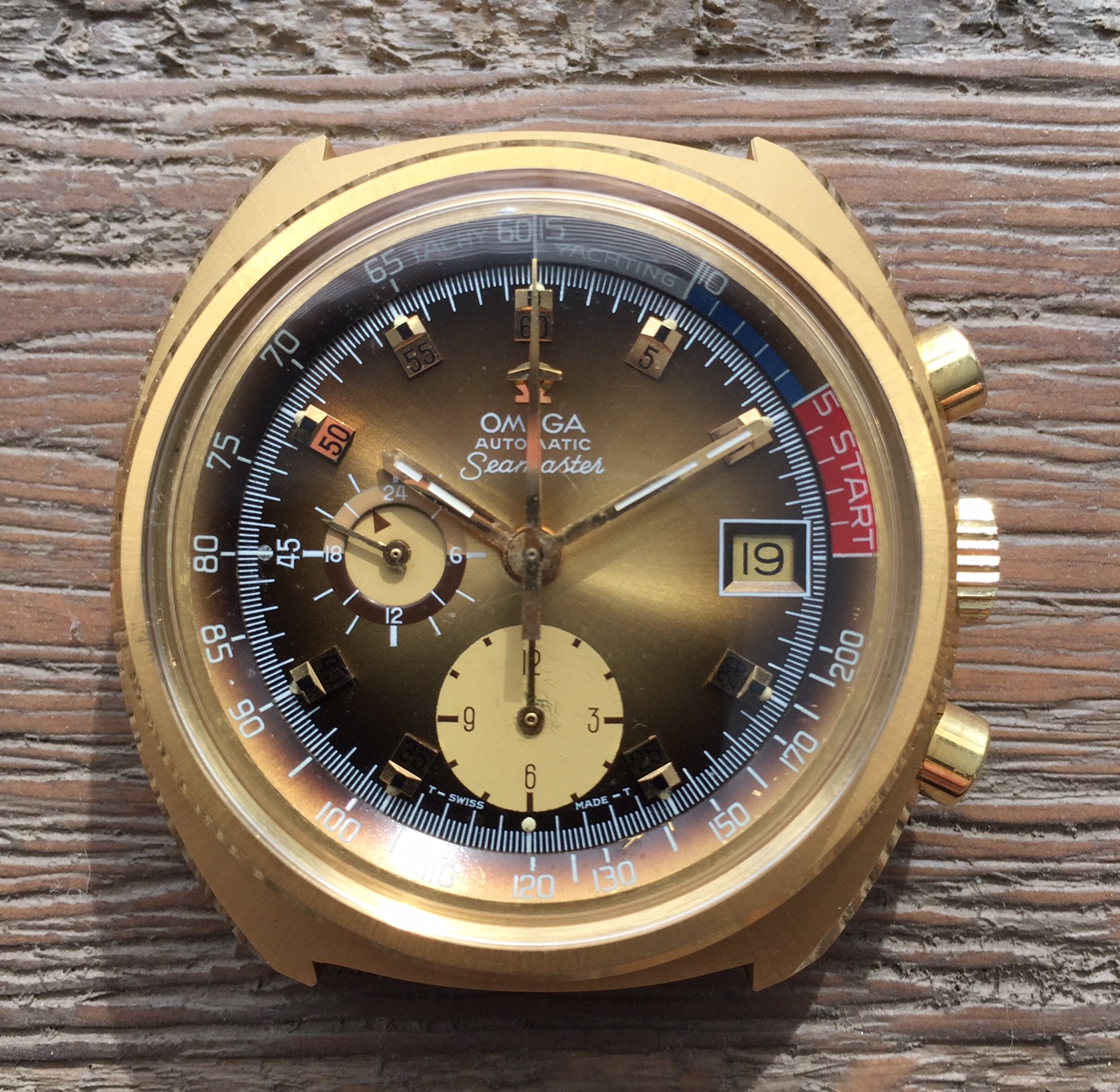

It isn’t completely original, but it is completely correct and if I say so, absolutely stunning (even with some visible wear and tear on the dial and bezel). This remains the only example of this dial I’ve ever seen. I’d love to hear from other owners out there, if there are any.


Before And After
My watchmaker returned the old case to me, which I can now look to whenever I need a reminder of the dangers of the polishing wheel. Here are some shots with it next to the reassembled new case to illustrate just how abused the poor original case was:
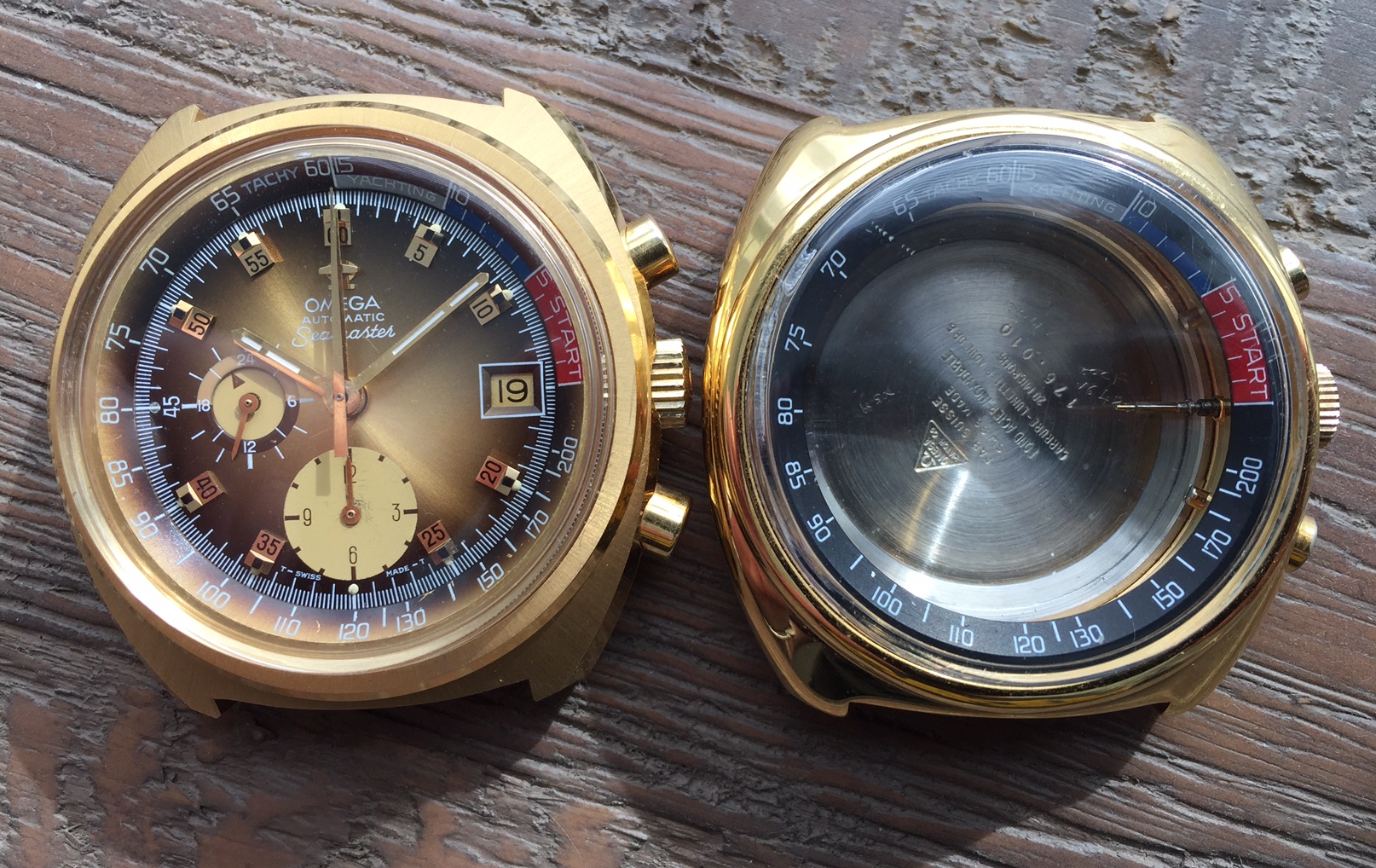

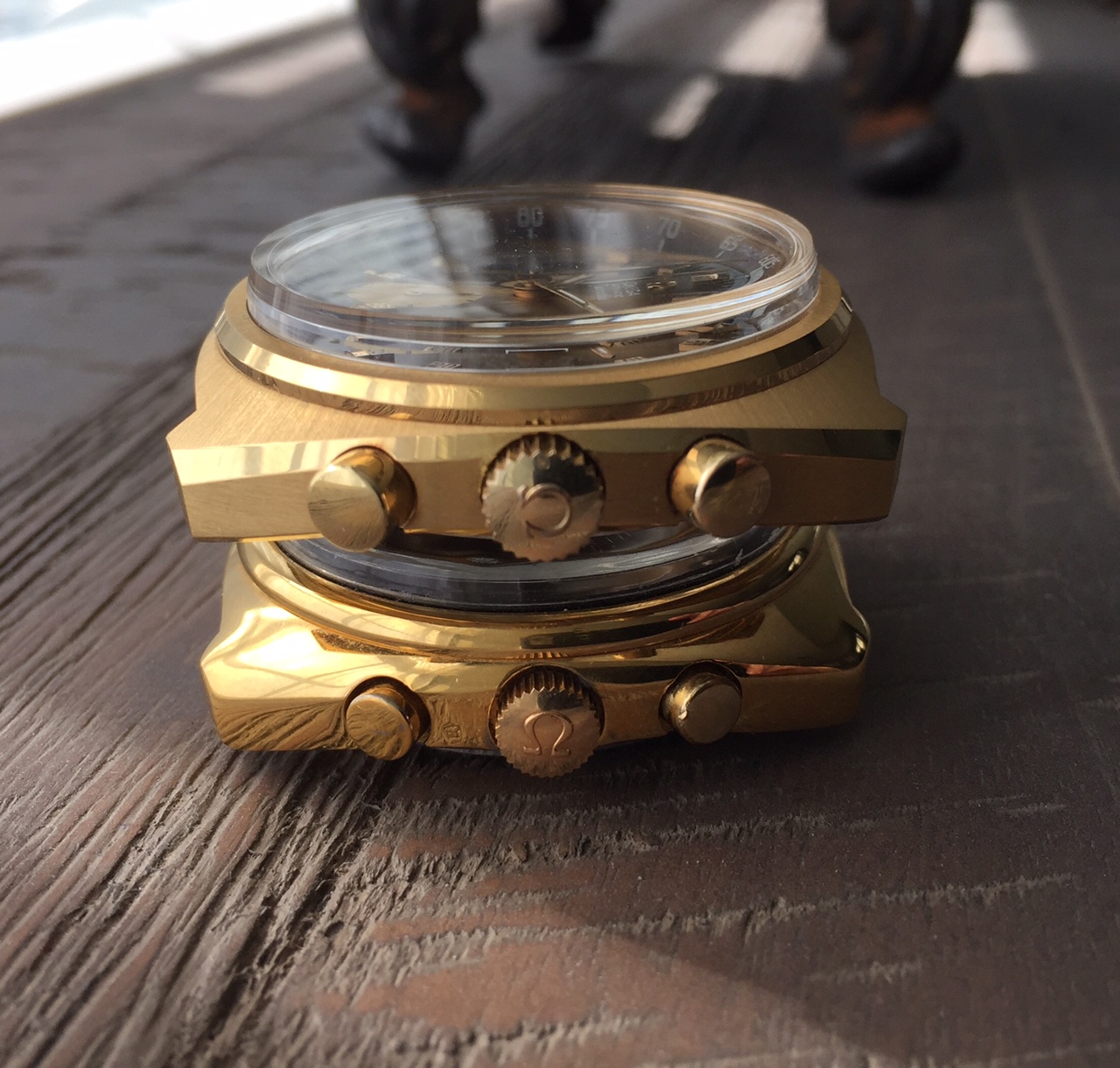



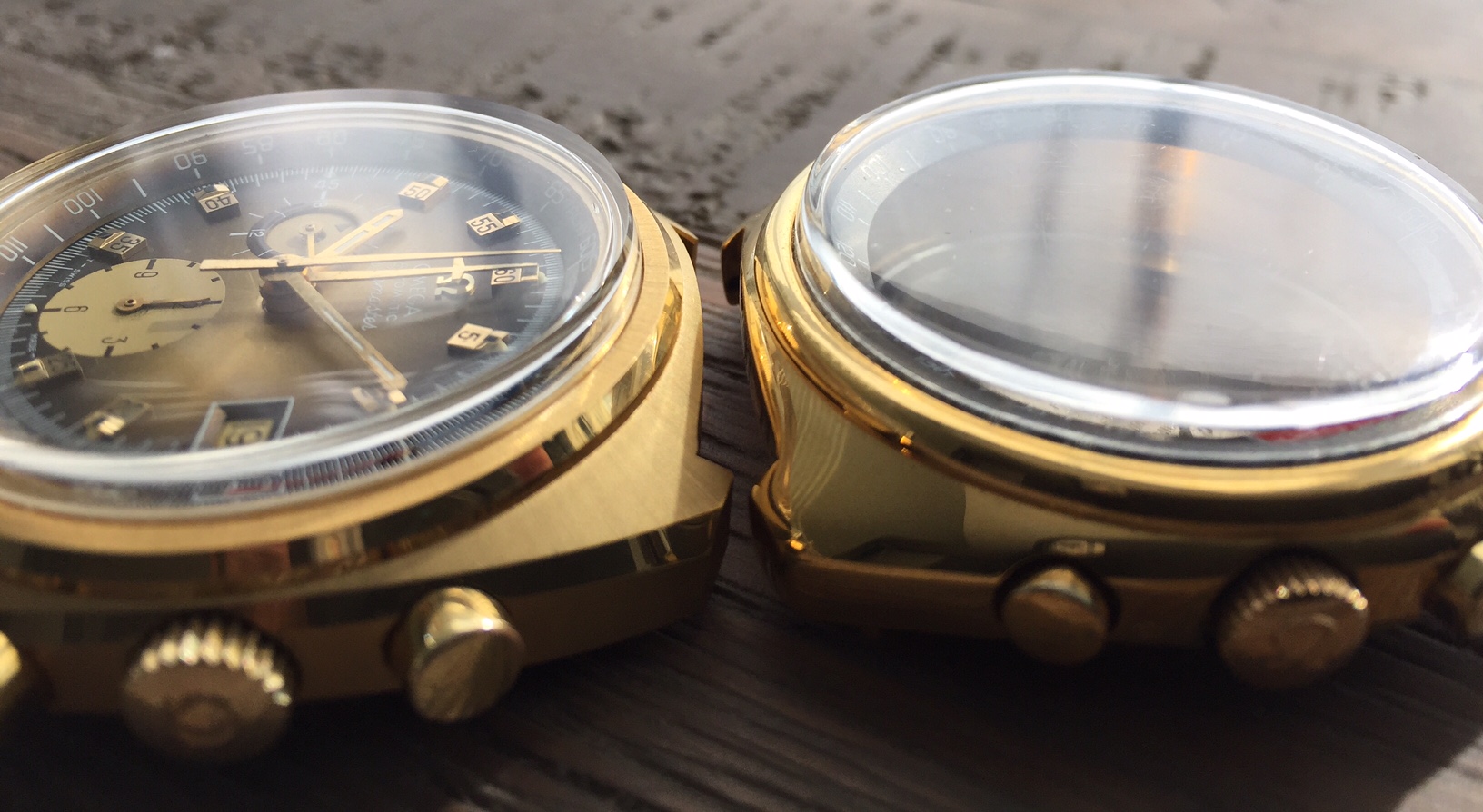


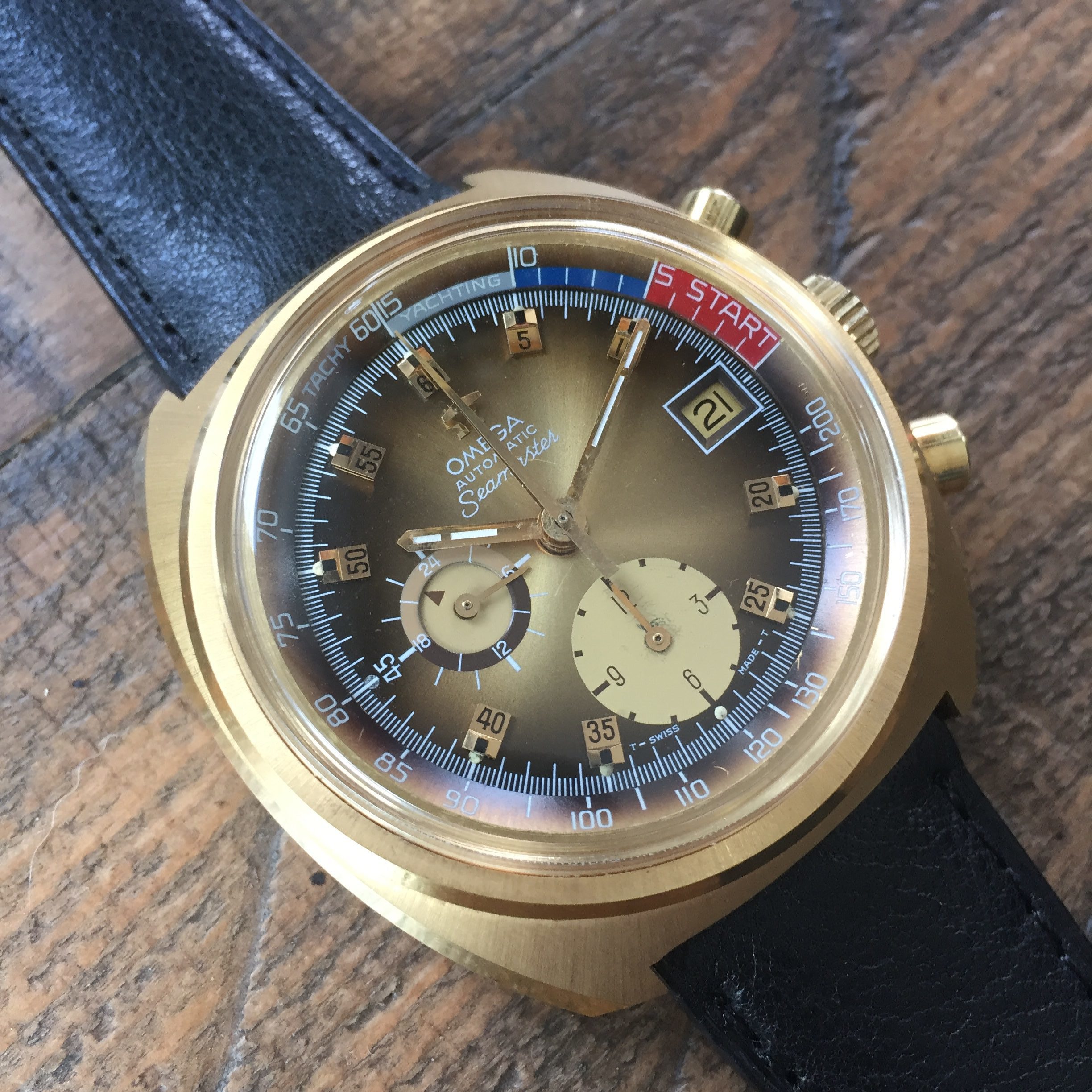
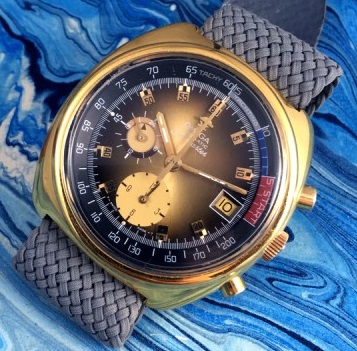
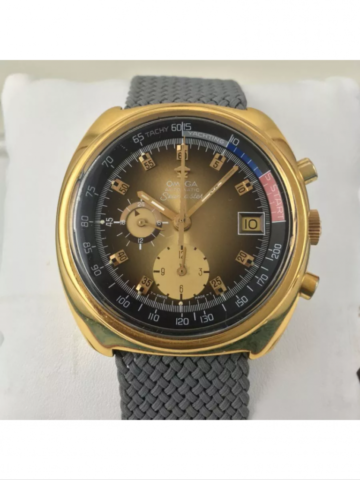
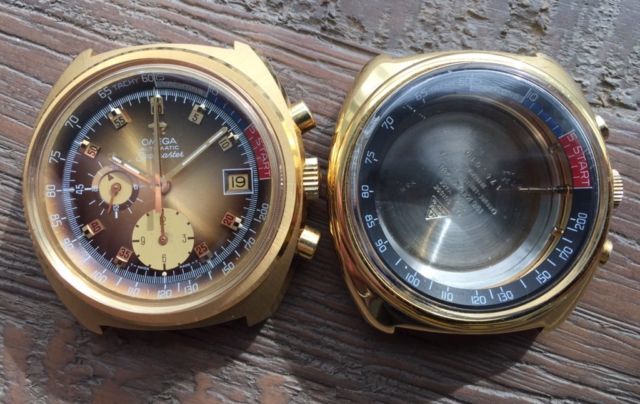
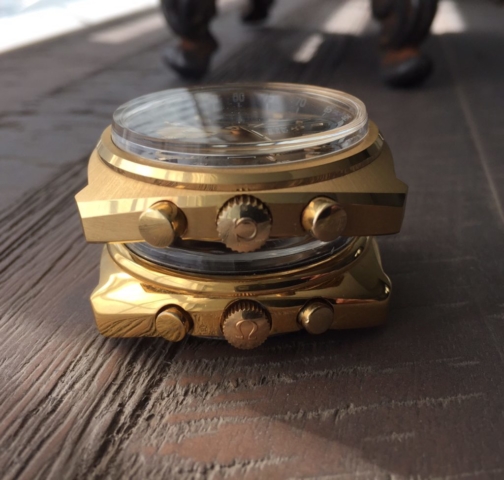
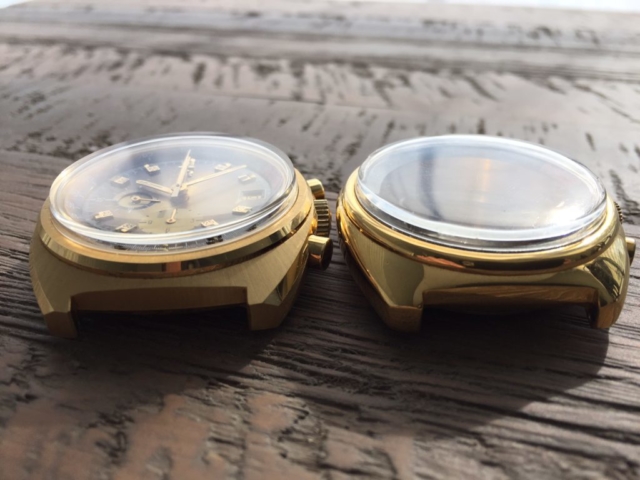
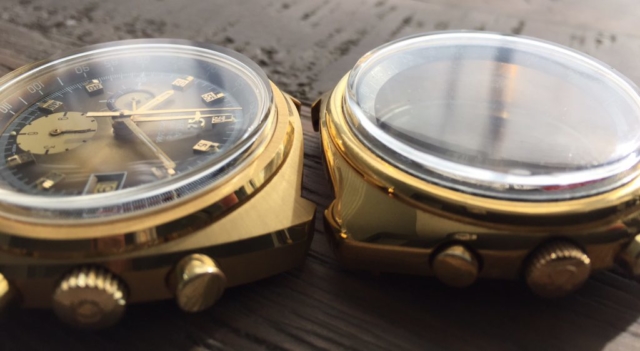
Wonderful. Just wonderful. Love it!
Andy showed me this watch in person and it is truly stunning, a real treat. Congrats Andy, and wear it proudly!